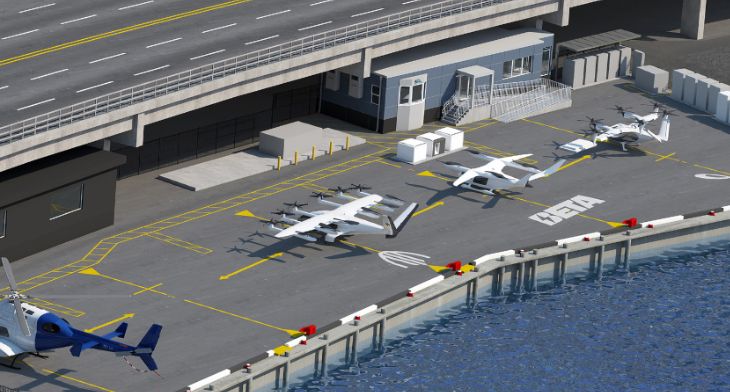Infra
Advancing eVTOL ground infrastructure in New York

The only way is up for Atlantic Aviation as it extends concession to operate East 34th Street Heliport for five years and embraces the “complex web of parts” required to support electric aircraft operations.
Recognising the New York City metropolitan area as a “key market” for the early establishment of advanced air mobility (AAM) operations, Atlantic Aviation recently extended its concession agreement to operate the city’s East 34th Street Heliport for a further five years. The agreement, which was made with New York City’s Economic Development Corporation (NYCEDC) and the City of New York includes plans to enhance the infrastructure to support electric vertical take-off and landing (eVTOL) operations.
Eric Newman, VP commercial strategy and sustainability, told Aerospace Global News, “we believe that there is a meaningful opportunity to establish the East 34th Street heliport as a hub for quiet, sustainable air travel in and around New York City.”
In line with plans to support future eVTOL operations, Atlantic, which is positioning itself as a technology-agnostic aviation infrastructure provider, is collaborating with its utility provider to upgrade power services at the heliport and install charging infrastructure including at least two e-aircraft chargers. “We plan to install both a Combined Charging System (CCS) charger and Global Electric Aviation Charging System (GEACS) charger – each ahead of our partners’ certification timelines,” revealed Newman. The new infrastructure will future-proof the heliport as a flexible, technology-agnostic facility capable of supporting a wide range of electric aircraft including eVTOLs.
However, Newman also emphasised that the plan is “not to convert the heliport for eVTOL activity,” as it will continue to accommodate conventional aircraft as well. Instead, the focus is on developing the site (and others) to facilitate electric aircraft operations, with the primary challenge lying in utility upgrades and regulatory compliance. Atlantic operates more than 100 FBOs across North America, providing a full range of services for the private aviation sector. The company is actively coordinating with regulators, OEMs and operators to ensure the site is well-prepared for safe eVTOL operations. Joby Aviation, Archer Aviation and BETA all plan to begin eVTOL operations at the New York facility in the coming years.
The heliport’s utility upgrade is already in progress with engineering and architectural support being coordinated by the utility provider, although Newman explained that final timelines will depend on “design, utility alignment and local/ regulatory approvals.” Atlantic is also working closely with OEM and operator partners to anticipate and meet charging requirements well in advance of aircraft certification, to ensure a smooth start as soon as they are ready to launch commercial operations. “Due to all these moving pieces, it’s hard to put a solid start date for eVTOL operations on paper, but we’re focused on moving forward appropriately and in line with aircraft developments,” confirmed Newman.
Describing AAM as “a natural adjacency for [Atlantic] to engage with and understand,” he underlined that the company wants to comprehensively understanding its ecosystem – encompassing the entire AAM value chain and its stakeholders. “It is a complex web of parts that will need to fit together and work for each contributor in order to build a successful market and industry.”
Envisioning what future heliports and vertiports will look like, Newman agreed this really depends on the use case but for air taxi-type services he anticipates, “these sites will aim to be frictionless facilitation points for customers to safely, comfortably and quickly move from one mode of transport to another.
“The goal will be to have a comfortable and clean area for customers to check in and, potentially, wait for their aircraft – but the less time these passengers stay at our facility, the better,” he concluded. “The aim is to move them from ground vehicle to air vehicle as quickly and safely as possible.”










